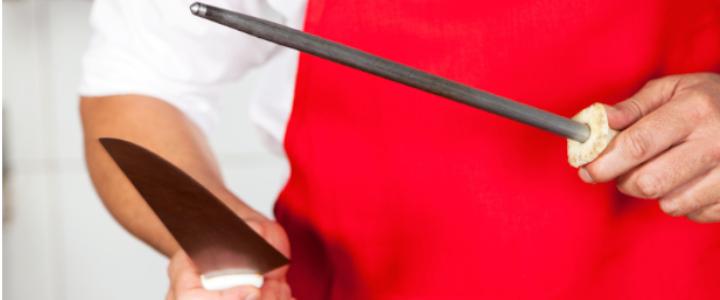Purchasing a new sharpening steel? Here’s what you need to know
As any professional cook or butcher knows, a blunt knife is not your friend. A dull blade requires more pressure to cut, which increases the chances that the knife will slip from your hand and hurt you. As well as the safety concerns that a blunt blade presents, they can also affect the overall quality of your produce, as a blunt knife won’t give you the same high quality cut that you’d get from a sharp one.
Producing quality cuts of meat is a key factor in achieving success in this industry, so it’s vital that you keep your knives looking sharp. That’s where we can help - we understand that it’s important to get the best equipment at the very best prices, so here at Butchers Equipment Warehouse, we supply a range of high quality butchers steels from top brands like Isler Steels and F.Dick Steels, to suit all your sharpening needs, without breaking the bank.
But before you make the final decision on which sharpening steel to buy, here are a few things you need to keep in mind.
How hard is the blade you’re using?
The hardness of your blade will play a big factor in the choice you make when selecting a sharpening steel. As a general rule - the harder your blade, the more abrasive your sharpening steel needs to be. If you’re unsure on how hard your blade is, it should have a hardness level assigned to it based on the Rockwell C hardness scale (HRC). For reference, professionals usually use knives with a HRC rating of around 55 and above.
Also, harder metals have a tendency to be a bit more brittle than soft metals, so it’s vital to double check that your sharpening steel is harder than the knife you intend to use it on. For seriously hard blades, we’d recommend you opt for diamond or ceramic sharpening steels.
How big does my steel need to be?
The material of your sharpening steel isn’t the only thing you need to make note of when selecting it. When it comes to getting the best steel for your knives, size does indeed matter. Your sharpening steel always needs to be at least the same length as the blade you’re using it on. Why? Because the longer your steel, the more runway you have to pull your knife along.
However if you’re just looking for a general measure, we’d recommend a minimum length of 12 inches (that’s just the rod itself, not the handle). That should cover the vast majority of the knives in your set.
What material should I choose?
The core of your sharpening steel will always be made of metal, but the surface material will vary depending on the type of knife you intend to use it on.
Ceramic steels (a weird contradiction, we know) are great for rubbing off a minuscule amount of metal from your knives as you hone them, sharpening them ever so slightly. Be aware though that ceramic is fairly brittle, so they can break if they’re not handled with care!
Another option is a diamond surfaced steel, which uses its diamond coating to remove a more substantial amount of metal during the sharpening process. These are a a great choice if you’re looking for a steel that you’d only need to use occasionally.
By far the most popular material though is steel itself, which is divided into 3 sub-categories: standard grit for hard cut sharpening, fine grit for maintaining the sharp edge of professional knives, and the ultra fine grit for honing the edge of the blades (which, as an added bonus, also leaves them looking as if they’ve just been polished).
What shape should the rod be?
Although it’s a small detail, the shape of the rod is definitely something you’ll need to be aware of when selecting the right sharpening steel. Different rods have different shapes, all of which have different effects on the performance of your steel. A few of the most common shapes include:
Round rods - these are the most common on the market, mainly due to their efficiency and lightweight properties.
Oval rods - these feature a bigger contact surface than round rods, allowing for fast, simple sharpening. However the price for this added simplicity is a bit more additional weight compared to round rods.
Squared rods - available with 2 different levels of sharpening, the 4 faces of the rod have certain grits which let you choose how sharp you want your knife to be. Be careful though, because the edges of the rod can damage the blade if they come into contact too often.
As a side note - a good steel should also have a substantial cross-guard between the steel itself and the handle. This is to protect your hand from the blade as you run it down the rod.
So that’s all the essentials covered! We know what it takes to keep up a sharp appearance here at Butchers Equipment Warehouse, and we’ve got everything you need to keep your knives slicing smoothly during the BBQ season. For over 30 years, we’ve supplied tried and tested, five star rated brands to our clients. With our extensive range of butchers machinery, accessories, and knives, we know our butchers equipment inside out. Give us a call on 01254 427721 and we’ll be happy to answer any questions you may have!




